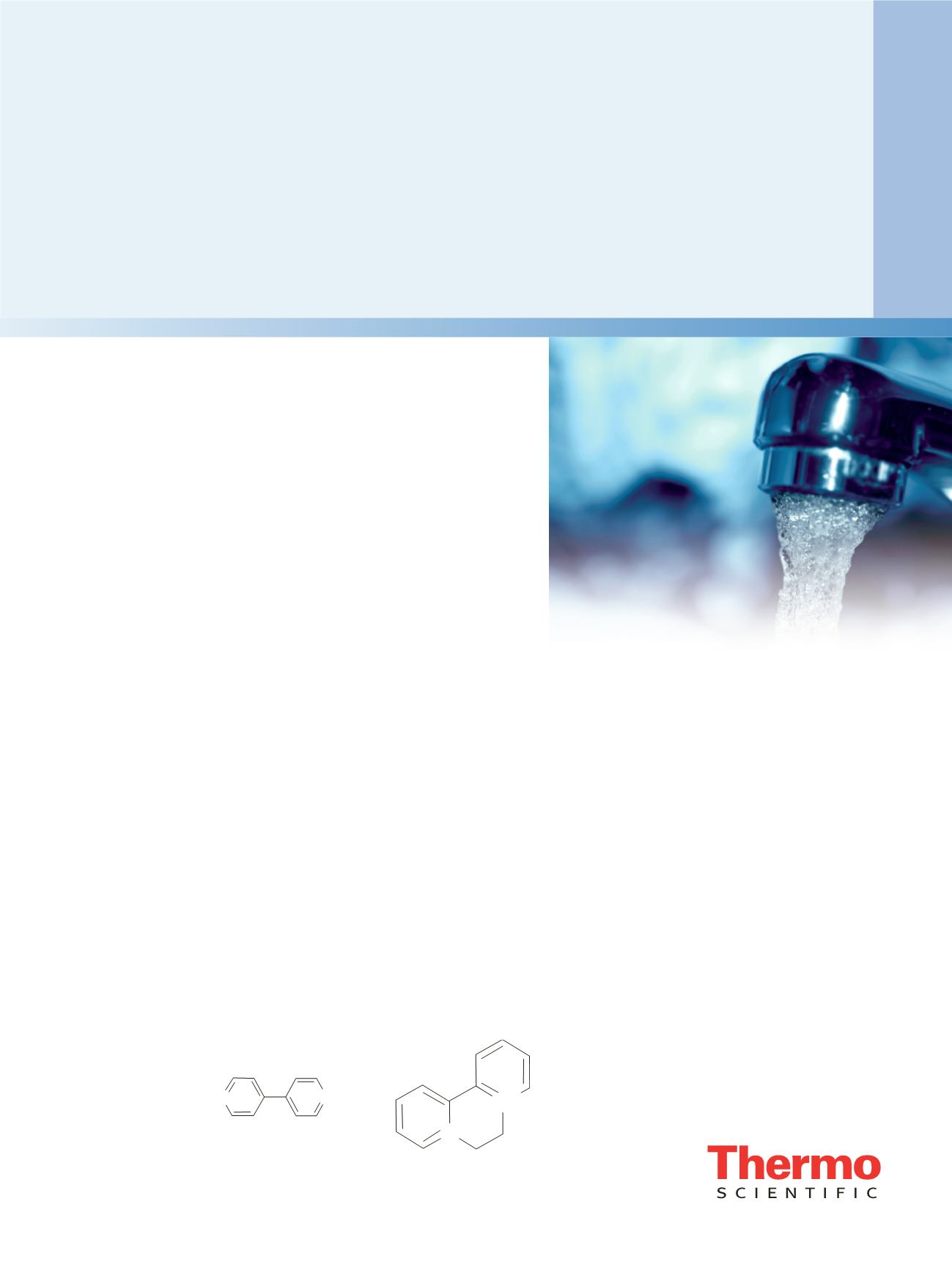

Sensitive and Rapid Determination of
Paraquat and Diquat in Tap and
Environmental Waters
Chen Jing,
1
Xu Qun,
1
and Jeffrey Rohrer
2
1
Thermo Fisher Scientific, Shanghai, People’s Republic of China;
2
Thermo Fisher Scientific, Sunnyvale, CA, USA
Application Note 1051
Key Words
Acclaim Trinity P1 Guard Cartridge, Acclaim Trinity Q1 Analytical Column,
Herbicides, On-Line SPE, U.S. EPA Method 549.2, Water Analysis
Goals
To develop an efficient high-performance liquid chromatography (HPLC)
method for the sensitive and rapid determination of paraquat and diquat
in tap and environmental water samples:
• Using on-line solid phase extraction (SPE) and UV detection in
the absence of an ion-pairing reagent in the mobile phase, and
• With method detection limits (MDLs) equal to or better than
U.S. Environmental Protection Agency (EPA) Method 549.2 and
European Union (EU) 98/83/EC
Introduction
Paraquat and diquat (structures shown in Figure 1) are
widely used as agriculture herbicides to control crop
and aquatic weeds. Contamination of drinking and
environmental waters with paraquat and diquat is
considered a risk factor for liver, heart, lung, and kidney
illnesses. The U.S. EPA specified a Maximum Contaminant
Level Goal (MCLG) of 20 µg/L for diquat in drinking
water,
1
and the EU published a general rule with a limit
of 0.1 µg/L for pesticides and herbicides in drinking
water (98/83/EC).
2
Reversed-phase HPLC with UV detection is typically
used for sensitive determination of paraquat and diquat,
and ion-pairing reagents are added to the mobile phase
to achieve baseline separation and symmetrical peaks on
conventional reversed-phase columns (C18 or C8). This
is the methodology used in EPA Method 549.2.
3
The use
of other stationary phases, such as those in the
Thermo Scientific
™
Acclaim
™
Mixed-Mode HILIC-1
4
and
Trinity
™
P1
5
columns, has been reported to achieve
baseline separation in the absence of an ion-pairing
reagent; however, peak shapes were still less than ideal.
For the HPLC determination of diquat and paraquat in
water samples, SPE is the typical method used for sample
extraction and enrichment. Whereas EPA Method 549.2
describes off-line SPE for water sample preparation,
3
on-line SPE offers the advantages of full automation, the
absence of operator influence, time savings, and strict
process control. Although the authors previously reported
an application of on-line SPE for the determination of
diquat and paraquat in water samples by HPLC,
5
this
more recent work shows an improved method using a
new mixed-mode column specifically designed to
provide good peak shapes for diquat and paraquat.
H
3
C _
+
N
N
+
_ CH
3
2Cl
–
2Br
–
N
+
N
+
Diquat
Paraquat
Figure 1. Structures of paraquat and diquat.



















